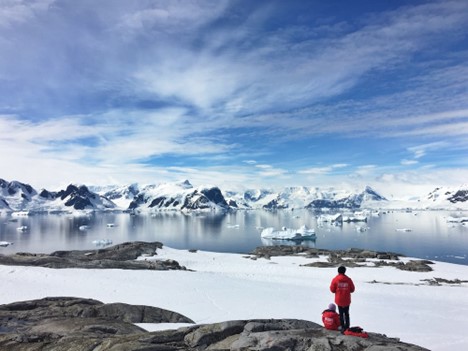
According to a new January 2018 study published in the journal Geology by scientists at Canada’s McGill University, sedimentary rocks found in the Canadian Arctic. The findings suggest that a billion-year-old fossilized algae may be the oldest known direct ancestor of modern plants and animals.
Scientific New Dating Techniques for Objects:
Canadian scientists discovered and analyzed the fossil and identified it as a red alga called Bangiomorpha pubescens. Researchers estimate that the basis of photosynthesis in plants today is 1.25 billion years old.
The findings could help unravel a mystery that has baffled Earth scientists for more than two decades, following the 1990 discovery of fossils encased in sedimentary rocks on Baffin Island in Canada’s Arctic region of Nunavut.
Using the dating techniques available at the time, the researchers estimated that the fossils could be between 720 million and 1.2 billion years old, leaving a margin of error of about half a billion years.
Using a new dating strategy:
Using the relatively new rhenium-osmium dating technique, the researchers determined that the rocks are 1.047 billion years old. Timothy Gibson, a PhD student at Canada’s McGill University and lead author of the study, reports.
“In my opinion, one of the most remarkable early fossils we see in the sedimentary rock record,” Gibson said in a phone interview.
“The peculiarity of this fossil is that it is almost identical to modern algae and is indeed the first and oldest fossil. It is very similar to a modern-day complex organism that we see today.”
Researchers work in the field for four years:
Gibson and his research team spent the past four summers (2014-2017) stationed between northern Baffin Island and the Arctic Gulf to collect their samples.
They were transported by helicopter and dropped at remote campsites. Days or weeks were spent at each site working in the field.
“We came to a country completely without trees, it felt like we were in the desert,” Gibson said.
The ever-changing Arctic climate presented its own challenges to geologists.
“At the beginning of August we had to stop field work when we got a meter of snow. It was hard to see through the snow at the rocks,” Gibson said. “Also there was a really, really strong wind; Living in a complete fog for a week; But again it was two or three weeks of 15 degrees Celsius, no sun, no wind and working in a T-shirt.”
Gibson said the team also had to be wary of polar bears, but fortunately did not encounter these majestic, highly dangerous arctic predators.
Gibson also said he is finishing writing his PhD thesis and will expand his research to other areas in the Canadian Arctic, Greenland and even Svalbard. Expect to find the same geological features there.
“My future plans are to connect all the dots and make connections between the fields we’ve worked on on North Baffin Island and many other areas in the Canadian Arctic,” Gibson said. “I hope to visit the Yukon and Svalbard in any coming summer.”
Scientists from Lawrence Berkeley National Laboratory, California Institute of Technology, University of Alberta and Geological Survey of Canada are contributing to this research.
The Agron Institute, the Natural Sciences and Engineering Research Council of Canada, the Polar Continental Shelf Program, the Geological Association of Canada, and the Geological Society of America extended their support for the research.
More stories about the Northern Arctic region:
Canada: Labrador makes historic discovery of life on Earth.’Radio Canada International’
Finland: A meteorite fragment has been reported in the wilderness area of Arctic Finland.
Iceland: Mass tourism to Iceland peaks in unseasonable, inclement weather, Barents Observer
Norway: Norway and Russia are working together on ecosystem mapping efforts in Arctic waters, the Barents Observatory.
